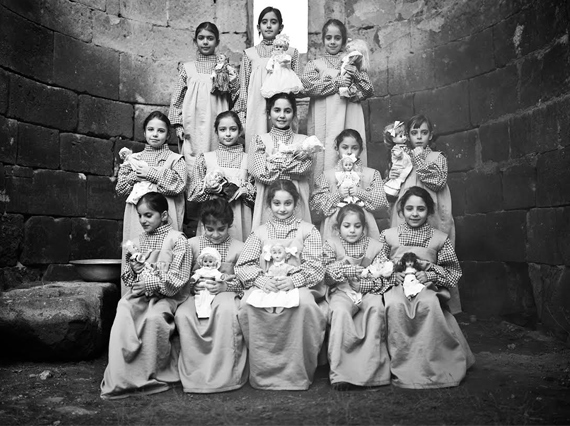On July 28, at 19.30, Mirzoyan library will host Vahan Stepanyan’s, Tigran Hamasyan’s, Lilit Stepanyan’s and Nelly Barseghyan’s “Red hail … because it never ends” film. This is the first screening of the film in Armenia, and before that, many foreigners had the chance to watch it. Note that at the 13th Prague International Quadrennial (June 18-28), alongside with over 70 participating countries, Armenia was represented with the scenic installation “Red Hail” dedicated to the centennial of the Armenian Genocide. The latter is structurally divided into 2 parts: a video-installation and a scenographic installation, but complementing one another, they become one unity. The “Red Hail” scenographic installation as an idea was formed in the result of one documentary photograph and the music interaction. The photo is titled “Some of little Armenians girls with their dolls” (Mush, 1910) made by a Norwegian missionary Bodil Katharine Biørn, who was an eye-witness of the massacres of Armenians and has rendered her assistance to Armenian women and children. The music is composed by Tigran Hamasyan based on the “New Flower” Resurrection Carol Nerses by Nerses the Graceful. The film director Vahan Stepanyan will show the Armenian audience how the film started and the process with remarkable details.
In addition to the film screening, Lilit Stepanyan and Nelly Barseghyan will talk about the idea of the Armenian screening in 13th Quadrennial in Prague, and Tigran Hamasyan will tell about his “Luys i Luso” (Light of Light) program and his trip to Armenia, Georgia and Turkey. “Every Armenian man takes his duty to do something on the subject of Genocide, and we are not an exception,” said co-author and curator of “Red Hail” project and scenic designer Nelly Barseghyan in the interview with Aravot.am.
The festival, in her words, is a wonderful opportunity to present our pain to the foreigners in the most influential way. “It was also important that we did not appear in the psychology of a victim. We showed that, it’s true, you slayed us, the children died, but look, what a powerful generation we have after the calamity, how many children there are hundred years later, who are alive, happy and playing …”. Back to the widespread opinion that after April 24, the number of events dedicated to the centennial of the Genocide will drastically drop, our interlocutor agreed that they are not carried out in a pace as before April 24, but they are still on. Even some individuals are doing something. “I think we should not determine by the number of event, importantly is their quality and the message of what you want to say and what you want to show. Personally, I do not like that the issue is approached too much in the image of a victim. I want to be presented in an image of a reborn and strong nation,” concluded Nelly Barseghyan.
Siranush HAYRAPETYAN

























































